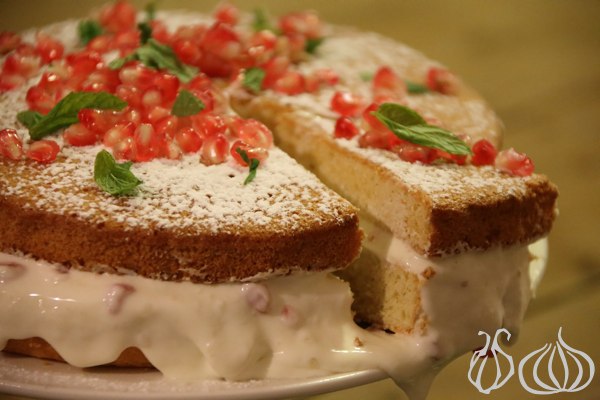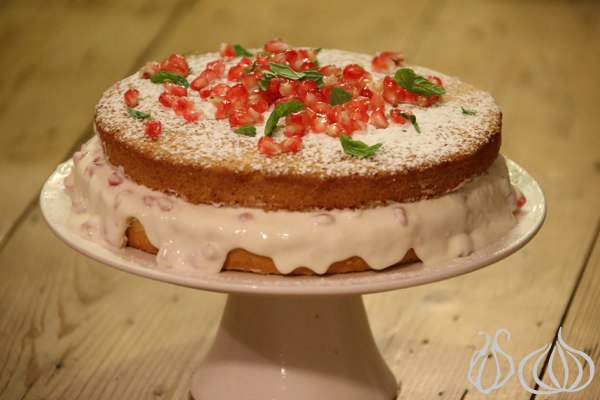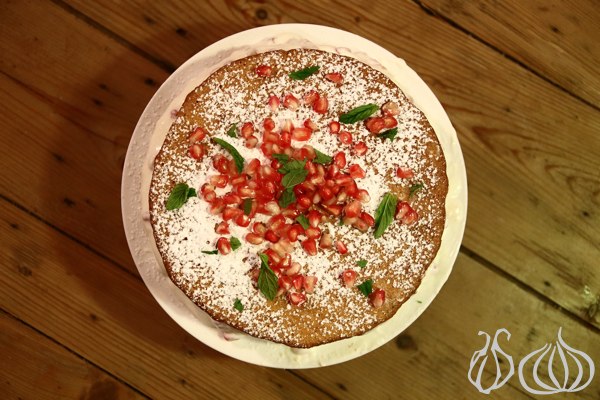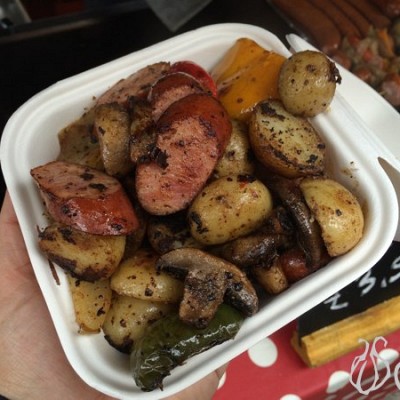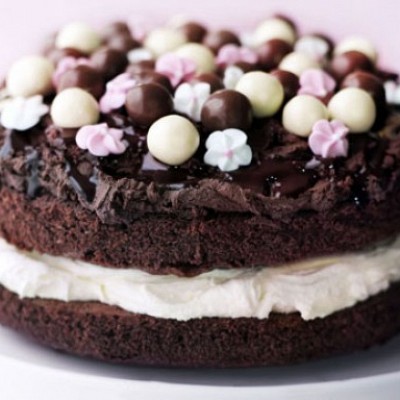Two days ago, I published on Instagram and Facebook the picture of a Labneh cake. Following many inquiries about the origin and recipes behind this creation, I succeeded to get you the needed details. This cake is extracted from a new cookbook: The Jewelled Kitchen by Bethany Kehdy. "It's an improvised version as I could not find quark cheese, I substituted labneh and also did not use gelatine as the recipe calls for." Bethany tells me.
We were twenty persons enjoying that cake and loved it so very much. It's ingenious!
It’s a bold statement, but it’s safe to say that this marvellous cake falls into my “top five favourite cakes” category. The following Middle Easternized version is based on my friend Sascha Minn’s quark summer cake rather than a classic dessert from the region. It’s an elegant cake: summery, zesty, light and fluffy. The quark cheese keeps the fat content to a minimum, and Greek yogurt can be substituted if you’re unable to find quark. If you’re averse to raw eggs, you can omit them, although it will affect the filling’s texture. Either way, wash a slice of this cake down with a glass of bubbly and forget your worries.
- 5 eggs, at room temperature
- 200g/7oz/1 cup caster sugar
- zest of 1⁄2 lemon
- 100g/31⁄2oz/scant 1 cup self-raising flour
- small piece of cold unsalted butter
- 100ml/31⁄2fl oz/scant 1⁄2 cup whipping or double cream
- 8 gelatine leaves or 2 sachets powdered gelatine
- 500g/1lb 2oz quark or labneh
- juice of 1 lemon
- 1⁄4 tsp rosewater or vanilla extract (optional)
- seeds from 175g/6oz pomegranates (see page 216), plus extra to decorate
- icing sugar, to dust
- chopped mint leaves, to sprinkle
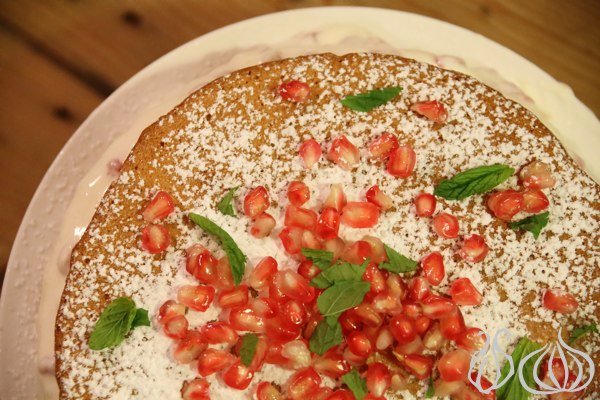
- Separate two of the eggs; put the egg whites in a glass mixing bowl and the egg yolks into a large mixing bowl. (If you have time, chill the glass bowl first, as this will improve the texture of the egg whites.)
- Whisk the egg whites vigorously for 2 minutes until you achieve soft peaks, keeping the mixer or whisk moving around the edges and the centre at all times to ensure that all the egg white is mixed thoroughly. Set aside.
- Add a whole egg to the egg yolks in the large mixing bowl along with 100g/31⁄2oz/1⁄2 cup of the sugar and 1 tablespoon water. Beat for about 1 minute until you achieve a creamy consistency.
- Add the lemon zest to the bowl, and sift in the flour. Beat for about 1 minute to incorporate. Next, add in the whisked egg whites and fold in thoroughly with a large metal spoon, making sure to remove any lumps. Try not to tap the bowl with the spoon as you’ll lose the air, which will reduce the general fluffiness of the cake.
- Preheat the oven to 170 ̊C/325 ̊F/Gas 3. Put the butter in the centre of a deep, springform 20cm/8in cake tin and line with parchment paper, cutting around the edges closely so it fits the base. (The butter will help the parchment paper to stick to the tin.) Pour the mixture into the prepared cake tin and level it with the back of a spoon.
- Bake in the oven for 35–40 minutes on the top shelf or until the cake is lightly golden and a skewer inserted into the centre comes out clean.
- Leave the cake to cool for about 20 minutes before releasing the base and carefully peeling off the parchment paper. Using a serrated knife, carefully slice the cake horizontally into two layers, turning it as you go to help keep the knife level. Transfer the two cake layers to a wire rack to cool.
- Put the cream in a medium bowl and whip for about 2 minutes until soft peaks form. Be careful not to over-whip. Set aside.
- Cut up the leaf gelatine, if using, into smaller pieces using kitchen scissors. Put in a small bowl, cover with cold water and leave to soak for 2 minutes, then drain well. Return to the bowl and pour over 4 tablespoons hot water as you whisk vigorously, making sure all the gelatine dissolves and there are no lumps remaining. Alternatively, follow the packet instructions if using the powdered gelatine.
- Separate the two remaining eggs. Whisk the egg whites as in step 2. Put the yolks and remaining sugar in a large mixing bowl and beat vigorously for 1–2 minutes, then pour in the gelatine and continue beating vigorously.
- Add the quark, whipped cream, lemon juice and rosewater, if using, and fold into the mixture with a large metal spoon. Add the whisked egg whites and fold in gently, just enough to incorporate with no remaining lumps. Add the pomegranate seeds and gently fold in.
- Place the cake tin, base removed, on a serving plate, add the base layer of the sponge cake, cut-side up, and lock the tin. Pour in the filling, gently spread it to level and then cover with the other sponge cake layer. Transfer to the fridge and leave to chill for at least 1 hour until the filling sets. Dust with icing sugar and sprinkle with extra pomegranate seeds and mint and serve.
